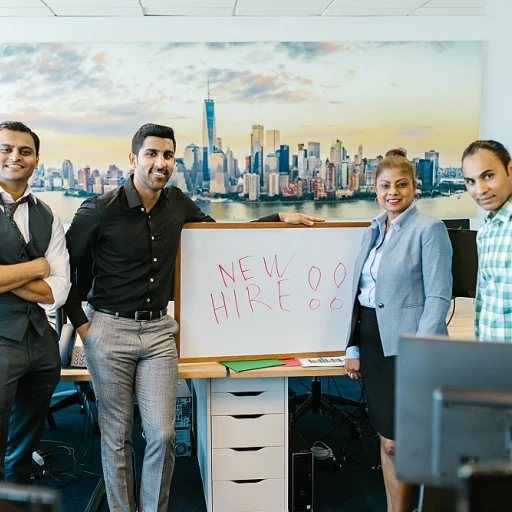Understanding Unlimited PTO
Discovering the Essence of Unlimited PTO
Unlimited Paid Time Off (PTO) is a revolutionary approach that transforms the traditional ways companies manage vacation and leave time. Instead of providing a fixed number of days a year to employees, businesses with an unlimited PTO policy allow their teams to take as much time off as necessary. The emphasis shifts towards trust and responsibility, where employees are encouraged to manage their work commitments alongside their personal time. This innovative PTO policy goes beyond conventional vacation policies, empowering employees to decide when they need a break without being bound by a set number of days. This flexibility can be especially appealing in today's fast-paced work environment where the balance between personal life and work obligations is crucial. To understand the dynamics of this model, exploring the nuances of time off requests can provide a clearer picture of how unlimited PTO operates in practice. Many businesses adopting this approach anticipate that the benefits will far outweigh the challenges, as it can potentially lead to more satisfied and engaged employees who appreciate the autonomy over their vacation time. However, the success of this policy rests heavily on the premise of mutual trust between the employer and employees. It's not merely about granting unlimited vacation time but ensuring that employees feel accountable for their roles in the business while enjoying their time off. Trust forms the backbone of an effective unlimited PTO policy, requiring careful consideration and alignment with company values. As we delve deeper into building a balanced PTO framework and addressing potential hurdles, it's essential to draw on real-world experiences and statistical insights to measure its true impact on work-life balance.The Role of Trust in Unlimited PTO
The Essence of Trust in Unlimited Paid Time Policies
The cornerstone of an effective unlimited paid time off (PTO) policy lies in the establishment of robust trust between the company and its employees. When a business sets forth a policy allowing employees the freedom to take an unlimited number of days off, it signals a mutual understanding that the employee will still fulfill their responsibilities and meet company expectations.
Unlimited PTO isn’t a free pass to unlimited vacation time without accountability. Instead, it’s about flexibility and trusting employees to manage their days and work commitments effectively. Trust ensures that employees can take much-needed rest without feeling guilty or fearing negative repercussions.
To foster this environment, companies must cultivate a culture that promotes transparency and open communication, where employees feel comfortable discussing their needs. Such a culture helps mitigate the risks of traditional PTO policies where employees might hoard or lose days unnecessarily.
Additionally, managers have a role in being transparent about the demands and expectations during peak business times so that employees can plan their leave appropriately. Offering clear guidelines and a simple policy template can also further assist employees in understanding their leave entitlements.
Ultimately, the success of an unlimited PTO policy heavily depends on the trust extended to employees, empowering them to manage their workload alongside their personal time away. For a deeper dive into the nuances of PTO policies and optimizing leave strategies, visit this resource on time-off bidding dynamics.
Designing a Balanced Unlimited PTO Policy
Crafting a Well-Structured PTO Framework
Designing an effective unlimited PTO policy requires a delicate balance that caters to both the needs of the company and the well-being of its employees. To achieve this, it is crucial to develop a policy template that includes clear guidelines while allowing flexibility. A sound framework will not only help in managing employee time requests but also ensure business operations run smoothly.
Setting Clear Expectations
While the concept of unlimited vacation sounds ideal, it is vital to set clear expectations for both the company and the employees. This involves defining the procedures for requesting time off and setting a reasonable number of days that can be requested consecutively. A transparent pto policy that specifies how many days a year employees can take off can mitigate potential misunderstandings.
Incorporating Flexibility
The implementation of flexible pto policies can significantly benefit a company by boosting employee morale and job satisfaction. By allowing employees to take leave without the stress of keeping track of pto days or worrying about the pto tracking system, businesses can foster a trusting work environment. This aligns closely with the principles of an unlimited paid time off system.
Maintaining Transparency with Communication
Effective communication is the cornerstone of a balanced unlimited vacation policy. Employees should feel comfortable and confident in making leave requests, knowing how these requests will be handled without bias. Employers can achieve this by explaining the decision-making processes clearly and ensuring that managers understand the implications of unlimited pto on work goals and productivity.
Addressing Common Concerns
Companies might be hesitant to adopt an unlimited pto framework due to concerns over abuse or potential disruptions. However, by incorporating mechanisms for regular performance reviews and setting clear objectives, a business can monitor any disruptions in work without restricting paid time off. Additionally, companies should consider a balance between sick leave and traditional vacation policy solutions to create comprehensive pto policies that meet diverse employee needs.
For more insights on maintaining balance with crafting the perfect text for calling out of work in different scenarios, explore expert advice and strategies.
Addressing Potential Challenges
Identifying and Tackling Potential Drawbacks
When implementing an unlimited PTO policy, it’s essential to anticipate and address potential challenges that might affect both employees and the business as a whole. Being proactive in this regard helps in creating a policy that strikes a balance between flexibility and productivity.
Monitoring and Preventing Policy Abuse
- Clear Guidelines: Provide detailed policy templates that outline expectations for employees. This will help in reducing confusion and preventing misuse of PTO days.
- PTO Tracking Systems: Implement tracking mechanisms to monitor vacation time and sick leave. This ensures transparency and assists the company in managing the number of PTO requests effectively.
Ensuring Consistency and Fairness
One of the primary concerns with unlimited paid time policies is ensuring that all employees feel they have equal opportunity to take time off without bias. Reinforcing a culture of trust and understanding within the team, aligned with the company’s business objectives, can mitigate such concerns.
Avoiding Burnout with Clear Communication
- Set Expectations: Make it clear when and how employees should request time off, thus preventing excessive absences that may lead to workload imbalances.
- Regular Feedback: Encourage managers to discuss vacation policy goals during performance reviews, ensuring that employees use their unlimited vacation days responsibly.
Cultivating a Responsible Work Ethic
Flexible PTO options should foster a culture where employees are encouraged to manage their work-life balance responsibly. By promoting self-management, the business can achieve a more engaged and focused team, which aligns with traditional PTO systems' benefits.
Case Studies: Success Stories and Lessons Learned
Real-World Insights: Successful Implementations
In the evolving landscape of work-life balance, some companies have successfully implemented unlimited PTO policies, offering valuable lessons for others considering similar approaches. These organizations demonstrate how trust, flexibility, and a well-crafted policy can lead to positive outcomes.
Tech Industry Leaders: Embracing Flexibility
Several tech giants have adopted unlimited vacation policies, citing increased employee satisfaction and productivity. These companies emphasize the importance of trust and autonomy, allowing employees to take paid time off without the constraints of traditional PTO policies. By focusing on results rather than the number of days worked, they have fostered a culture where employees feel empowered to manage their own time effectively.
Small Businesses: Tailored Approaches
Smaller companies have also found success with unlimited PTO, often customizing their policies to fit their unique business needs. These organizations prioritize open communication and clear guidelines, ensuring that employees understand the expectations around taking time off. By offering a flexible PTO policy, they can attract and retain talent in a competitive market.
Lessons Learned: Balancing Freedom and Responsibility
While unlimited PTO offers numerous benefits, it also presents challenges that need addressing. Companies that have thrived with this model often highlight the importance of setting clear boundaries and maintaining transparent communication. By establishing a policy template that outlines expectations and procedures for leave requests, businesses can prevent potential abuses and ensure a fair distribution of vacation time.
Impact on Work-Life Balance
The successful implementation of unlimited PTO policies has shown a significant positive impact on employees' work-life balance. By providing the flexibility to take time off as needed, employees can better manage personal commitments, reduce stress, and ultimately contribute more effectively to their roles. This approach not only benefits the individual but also enhances overall business performance.
Measuring the Impact on Work-Life Balance
Evaluating Company Culture and Employee Well-being
When assessing the impact of an unlimited PTO policy on work-life balance, companies must conduct a thorough analysis. Evaluating both company culture and employee well-being is essential for understanding the true effects of such a vacation policy. Establishing a balance between employee flexibility and operational needs requires continuous monitoring and feedback.
Tracking Utilization and Employee Satisfaction
Tracking PTO days and monitoring how employees utilize their flexible PTO can help identify patterns and trends. Regular surveys and feedback sessions can shed light on employee satisfaction. Companies can gauge whether employees feel empowered to request time off without hesitation, contributing to a healthier work-life balance.
Addressing Potential Inequalities
A critical aspect in evaluating unlimited PTO is identifying any inequalities in its application. Monitoring patterns in PTO requests and approvals can highlight discrepancies among different departments or employee groups. This allows businesses to address potential issues, ensuring a fair and consistent policy implementation.
Quantifying Business Impact
Companies should also measure the impact of unlimited paid time off on business performance. Analyzing metrics such as productivity, employee retention, and overall engagement provides valuable insights. This data can help refine the PTO policy template and enhance employees’ work experiences.
Emphasizing Continuous Improvement
An effective unlimited PTO policy requires ongoing refinement and adaptation. Regular evaluations of the work-life balance it provides are crucial for aligning this leave policy with the company’s changing needs. By fostering an open dialogue with employees and embracing feedback, companies can ensure their unlimited PTO policies offer maximum benefit.






